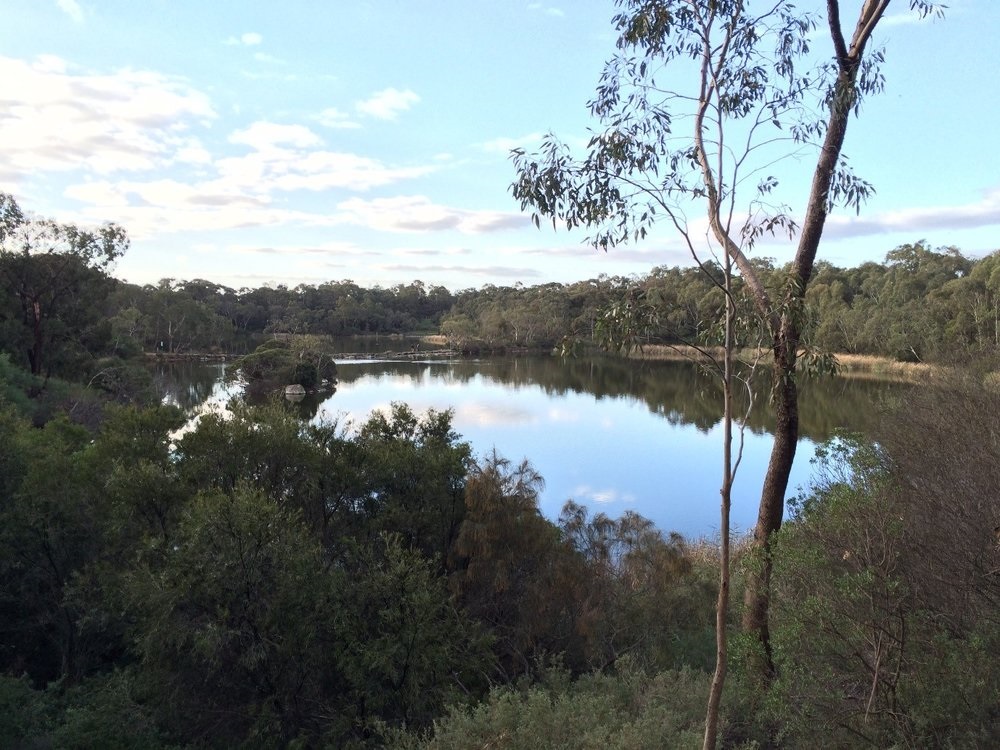When I think of Melbourne’s western suburbs, excellent wildlife-watching is not the first thing that springs to mind. This side of the city’s long, industrial history has taken a heavy toll on natural areas. Yet it would be incorrect to blithely write western Melbourne off as a wildlife wasteland. Parklands in this area are gradually receiving the recognition they deserve. Open spaces such as Cherry Lake and the Jawbone Marine Reserve are popular places to visit. However, many of these natural areas are not so natural after all, and careful scrutiny unveils a history of human use.
In the suburb of Newport there was formerly a bluestone quarry. However, when this closed down in 1968 the large quarry pit left a mark on the landscape. The pit was subsequently used as a rubbish tip for seven years before an astonishing transformation began. Rather than letting this site languish as an eyesore, the site was restored as a wetland and bushland park. And this restoration has been a spectacular success as evidenced by the diverse and abundant wildlife that now call Newport Lakes Park home.
The two large lakes at the heart of the reserve are a relic of the quarry pit and are now used by many waterfowl. Similarly, the dry sclerophyll vegetation on the slopes above the central lakes also supports many species. It isn’t only the number and diversity of animals that inhabit this pocket of vegetation that suggest how important this site has become; many species breed here. It is very common to see Eurasian coots paddling around the water margins with a small party of chicks following closely behind, while juvenile welcome swallows wheel around above the water as they master the skills of their aerial lifestyle.

These are common species in many parts of Melbourne, but species that are difficult to see in the city can also be found at Newport Lakes Park. The Park was the first place where I ever laid eyes on a spotless crake. These shy reed bed inhabitants are difficult to see at the best of times and when they do offer a sighting it is usually fleeting. You can imagine my surprise to find one just a couple of metres from the edge of the track, out in the open for an extended period of time. Similarly, common blue-tongues can be found among the leaf litter or sunning themselves during the warmer months, spiny-cheeked honeyeaters feed among the shrub layer, and koalas sometimes laze in the branches of eucalypts.

Another way to gauge the condition of a habitat is by the health of predator populations it supports. There are signs at each entrance to Newport Lakes warning visitors that snakes are present. This is not simply a case of the council covering their backs: tiger snakes can indeed be found in the park, surely surviving on a diet of frogs and other small vertebrates. In the air, brown goshawks terrorise honeyeaters that feast on nectar. High above the reserve, peregrine falcons can sometimes be seen tearing through the sky, hoping to catch a bird off-guard.
So why is the wildlife-watching so good here? The high quality habitat that has been established is the reason so many individuals of a diverse range of species live here, but another factor contributing to the viewing spectacle is how used to people the animals in this park are. Many people jog around the well-made pathways and children squeal gleefully as they enjoy the stepping stone causeway separating the two main lakes. Yet, grey teal, Pacific black ducks, and purple swamphens seem largely unperturbed by the commotion, and I’ve watched joggers pass mere metres from tiger snakes, oblivious to the presence of these supremely camouflaged predators (that are similarly nonplussed by the joggers).

There are few examples of restoration done as well as this in close proximity to the city. Families will love the close encounters with the waterfowl on the lakes, and if the thought of snakes is a deterrent to you, why not get down for a look while the weather is still cold and the snakes are less active? To further allay any fears, I go to Newport Lakes Park quite regularly and snakes are by no means a common sighting, even when the weather is warmer – just make sure to pay attention to your surroundings and wear appropriate clothing if walking or hiking through snake habitat.
So if you’re anything like me, why not rejoice in sharing the environment with these reminders of how far this site has come since its industrial past?
Banner image is of Newport Lakes Park and is courtesy of Rowan Mott.


Leave a Reply